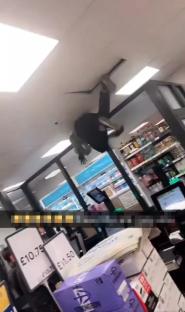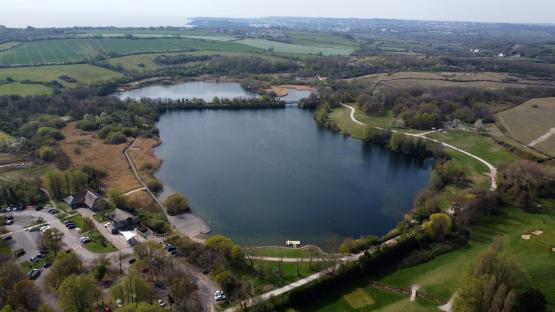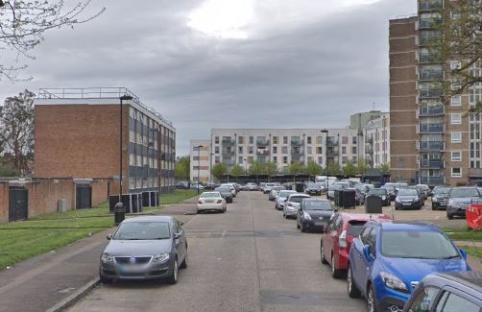TORONTO — Efforts to expand Ontario's vaccine rollout to adults of all ages in certain long-standing hot spots drew massive lineups at one pop-up clinic on Saturday as those otherwise excluded from the province's immunization drive rushed to get their shots.
Hundreds lined up for hours in Toronto's Thorncliffe Park neighbourhood, some with lawn chairs in tow, eager to get their first dose of vaccines that are still generally reserved for Ontarians of certain ages or occupations.
Ema Golich waited roughly four hours before getting her shot, but that didn't soften her anticipation for a moment she'd been thinking about for months.
Read more: Canada's COVID-19 case rate tops U.S. as country continues to lag in vaccinations
“I feel good, I feel excited,” said the 22-year-old student as she neared the front of the line.
“We've been in the pandemic for a year and it finally feels like it's on its way out. This is one step toward going back to regular life.”
Fozia Chaudhary brought her daughter, who's still too young to get the vaccine, to the clinic because her husband had to work. She said timing was of the essence for her neighbourhood, which has been deemed a COVID-19 hot spot by health authorities.
“This is a crowded area and I heard there's so many people catching the virus,” she said.
“So I decided if we have this opportunity to get the vaccine, why not? Why not get it today?”
Read more: Migrant farm worker airport COVID-19 vaccine pilot begins in Toronto
The clinic at Thorncliffe Park is an example of an approach the province is hoping to implement in several other hard-hit neighbourhoods.
Ontario announced the plan this week, saying it will be sending mobile teams into postal codes where the virus is prevalent, offering shots to residents aged 18 and older in congregate settings, residential buildings, faith-based centres and large workplaces. The areas will be selected based on patterns of transmission, illness and death from COVID-19.
Officials have said the plan will take some time to fully launch, but experts say the approach is a good one that will help blunt the impact of the third wave that's sending younger people to the hospital, many of them workers in essential jobs like manufacturing.
“I think this intervention is one of the best things that we can do right now to change the trajectory,” said Dr. Sumon Chakrabarti, an infectious disease physician at Trillium Health Partners in Mississauga, Ont.
“It's not going to get us out of the third wave, but it's going to be something that can hopefully blunt some of the severity of it. At the same time, once we start to come out of it, it's going to be a robust protection in the coming months.”
Chakrabarti said lowering the eligible age range to 18 in hot spots is “vital” to breaking chains of transmission in neighbourhoods where workers often bring the virus home to their families, a pattern he says is especially pronounced during the third wave.
It's likely that some people living outside the selected postal codes might try to “game the system” to receive a shot, Chakrabarti said, but there are mechanisms like asking for proof of address that would minimize some of that activity. Attendees at the Thorncliffe Park clinic were being asked to present their provincial health cards as proof of postal code.
Even if some higher-income people become eligible through living within the postal code, the approach is still a good way to reach those most at risk, Chakrabarti said.
“Don't let perfect get in the way of good,” he said.
He also noted that it's the right move to make now, following the province's initial approach that prioritized long-term care residents, health-care workers and the oldest seniors — which he said has protected the vulnerable and kept health-care workers on the job.
“I think that was the right first step to do regardless of what's happening now,” he said.
Dr. Naheed Dosani, a palliative care physician and health justice advocate, said Friday that he also welcomed the shift to an “exposure-based approach” in vaccinations, calling it a good step to help protect workers as virus variants are sickening young people more severely.
“We know that communities where essential workers are living, and particularly where racialized people in low income people live, these are the hardest-hit areas and these areas need to get prioritized for vaccination,” he said.
“A postal code system is not perfect, in the sense that there is gentrification in almost every region that exists, but it's a framework for us to ensure we're targeting those who are hardest hit by COVID-19.”
Read more: Researchers looking for clues to the COVID-19 pandemic in city sewers
It's not the only thing that should be done to protect workers, Dosani noted, pointing to other measures like paid sick leave, paid time off to get vaccinated and formal plans to bring shots directly to workplaces would further help those at risk of infection on the job.
He also said a mobile approach would benefit homebound people who can't get to clinics, and involving family doctors more fully in the vaccine rollout plan would help improve access within hard-hit communities.
“Every step we can take to address health disparities in implementation of COVID-19 vaccine access will help a lot,” Dosani said.
A spokesman with the Islamic Society of Toronto, which helped organize the vaccine clinic in Thorncliffe Park, said a similar pop-up site Friday saw people line up hours before the first 200 doses were administered at Masjid Darussalam Thorncliffe Mosque.
“We have tents outside and with the infection rate so high here lots of people really want the vaccine,” said Ilyas Mulla.
“It's good to have easy access and help the local community.”




